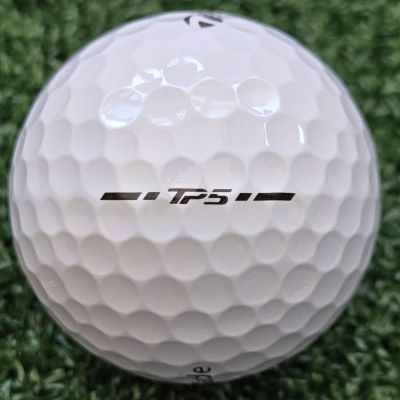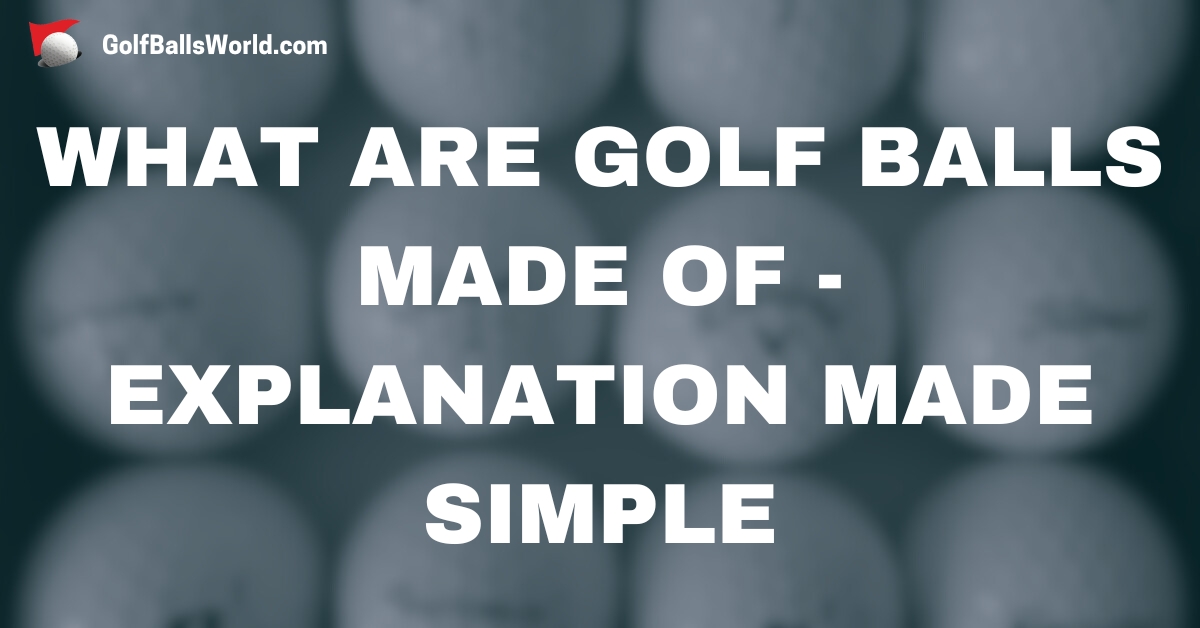You might have wondered what golf balls are made of at some point during your golf journey. It is not a big mystery compared to many decades ago when information was not broadly available. Anyway, golf balls have evolved quite a bit.
So, what is inside? Modern golf balls typically feature three main components: the core, the mantle, and the cover. First, the core is made of rubber or a mix of synthetic polymers. Then, materials such as ionomer resins, and advanced polymers are commonly used for the mantle. Finally, for the cover, two materials are the choice, urethane or ionomer ( often Surlyn).
Core Materials
The golf ball core is what gets things moving. Usually, it is made of rubber or a mix of synthetic polymers. One popular option is a solid rubber core that gives a nice balance between distance and control. Then there are also dual-core balls which are rare compared to solid core ones.
What the core really handles when you swing the club is energy transfer. Its task is to efficiently convert the energy from your swing into the ball’s velocity. Companies constantly experiment with core materials to squeeze out more yards off the tee.
Choosing the right core material can influence how far your ball goes. Also, it affects how it feels when you hit it. The core firmness will mean the difference between a softer or harder feel at impact.
The Mantle
The mantle is part of multi-layer golf balls, usually three-piece or more. It surrounds the core and plays a crucial role in affecting the golf ball’s spin and control.
The material choice for the mantle really matters. Materials such as ionomer resins and advanced polymers are commonly used. These ensure that the ball performs consistently across various shots.
But why double up on layers, you ask? Well, the mantle helps balance between softness for better control and firmness for extra distance. It tunes the spin dynamics, letting you decide how much backspin or sidespin you want. Additionally, it offers more precision, especially for those tricky approach shots.
With tech constantly advancing, some golf balls even feature multiple mantle layers. Those can be found in 4 or 5-layer balls which are encountered among premium models.


The Outer Cover
The outer shell or cover is what gives the ball its durability and feel. Plus, it plays a significant role in how it reacts when it hits the ground or the putter.
Most modern golf balls sport a cover made from one of two materials: urethane or surlyn. Urethane is soft, offering better spin control, particularly for those short game shots around the green. It’s a favorite among advanced players looking to finesse their play. On the flip side, ionomer or Surlyn are known for their toughness and lower spin. That makes it great for those who want more distance and durability over control.
The choice of cover material affects how the ball feels when you hit it. That ‘click’ off the putter face or the ‘whack’ off the driver is all influenced by the cover material. Depending on what you value more in a game you can find a ball tailored to your needs.
Aligning your ball choice with your personal game strategy can make a notable difference in your performance.
Dimples and Their Role
As an integral part of the cover, dimples do more than add a cool look to a golf ball. They determine how your ball flies through the air, shaping its trajectory and stability.
Dimples are all about reducing drag and increasing lift. When a golf ball spins through the air, these dimples create a thin layer of air that clings to the ball’s surface. This reduces resistance, letting the ball travel farther and straighter. Think of it like aerodynamics in action for your game!
There’s a science to their size, depth, and pattern. Some balls boast hundreds of dimples, each strategically placed to influence flight characteristics. Different designs serve different purposes, such as maximizing distance or enhancing control.
Manufacturers use wind tunnel testing and supercomputers to get the dimple patterns just right. This tech helps ensure that the ball behaves predictably.
Environmental and Sustainability Concerns
Golf balls might be small, but their environmental impact isn’t. Millions are lost on courses annually. That is a lot of materials, mainly plastics and rubber, ending up somewhere far from where they started.
The production process involves petrochemicals. They contribute to pollution and non-biodegradable waste.
But here’s the good news – there’s a building movement in the industry towards more sustainable practices. Some companies are exploring biodegradable golf balls that break down naturally. These balls are designed for less environmental strain, especially in water hazards.
Recycling initiatives are starting to gain traction too. Old balls can be repurposed, either through cleaning and resale or recycling materials for new products. By supporting these initiatives, golfers can play a role in cutting down waste.
Tech advances are also helping create balls with fewer environmental footprints. These involve using alternative materials or processes to not only make production greener but also potentially cheaper.
Opting for eco-friendly golf balls doesn’t have to compromise performance. Many are developed with a similar level of precision and innovation. Meaning, they offer quality play while also doing a bit for the planet.
Choosing the Right Golf Ball
Picking the perfect golf ball is like finding that comfy pair of shoes. It needs to feel right, match your style, and suit your goals. With so many options available, each offering something a bit different, choosing wisely can boost your game.
First thing, think about your playing style. Are you all about distance, or is control your game? Understanding your priorities helps funnel choices. Distance balls often come with firmer covers, while softer ones offer more spin and control.
Player level matters too. Beginners might lean towards two-piece balls offering simple consistency and durability. More experienced golfers often seek multilayered options for better spin and feel around the greens.
Brand loyalty is huge in golf, and each has its signature feel. Test out a few types to see which aligns with your needs. Many stores offer trial sleeves, making it easier to experiment without a big commitment.
Think about the typical playing conditions. If you typically face windy days or slower greens, some balls handle those conditions better. It can give you an edge in adapting your play.
Then there is the budget. Premium balls offer high performance, but they cost top dollar. However, there are plenty of mid-range options that offer a solid value for money.
Finally, remember that the right golf ball isn’t just about performance. It’s about playing the game you enjoy most. Consider what makes the round satisfying for you and go with that.
Related
- How Are Modern Golf Balls Made – The Technology Behind
- How the Core Material of a Golf Ball Impacts Your Game

